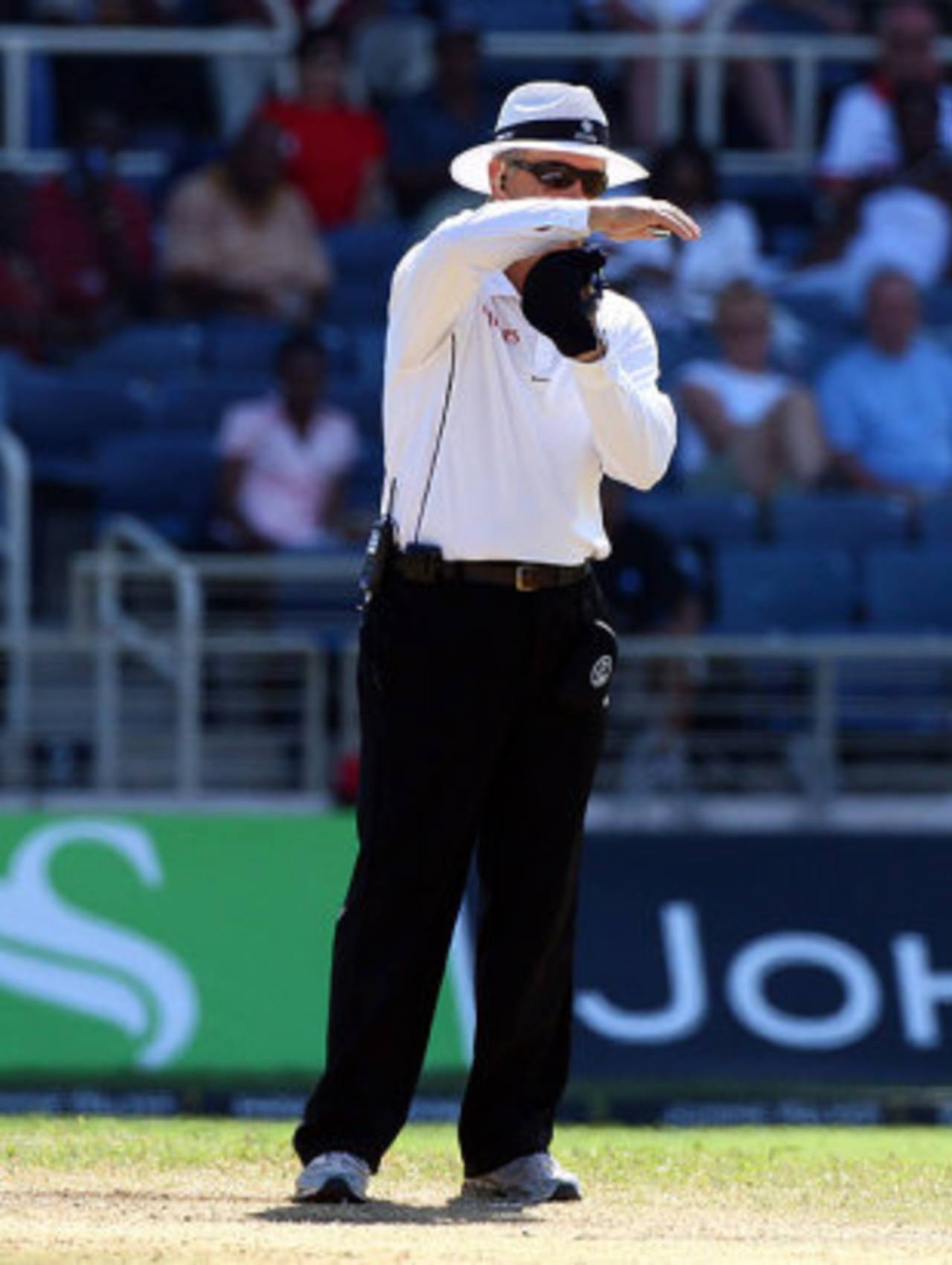The use of the Umpire Decision Review System (UDRS) in India is still in the balance given the opposition of several Indian players, including India captain MS Dhoni and Sachin Tendulkar, and the indifference of the BCCI. But the inventor of Hawk-Eye, the ball tracking technology that is most often used for the UDRS, has said the players' doubts simply reflect a lack of understanding and is confident of altering the mindset if given a chance to explain the technology to them.
India were part of the first trial of the referral system during their tour of Sri Lanka in 2008. They struggled with their referrals, getting most of them wrong. The team has been reluctant to use the technology since. However, the technology used in that series was Virtual Eye, a different technology from Hawk-Eye.
"The issue of whether to use it or not has nothing to do with cost issues," Paul Hawkins, managing director of Hawk-Eye Innovations, said. "I think it is mainly whether the Indian team has confidence in the technology. If the Indian players take some time to understand the system fully, that it wasn't Hawk-Eye [in Sri Lanka]; if it was explained to them properly, those concerns would go away."
Hawkins said he would like to sit down with the players and show them how Hawk-Eye works. He has met with India coach Gary Kirsten in the past and says a lot of Kirsten's questions were answered.
"We are trying to get to speak to some of the players," Hawkins said. "I think Dhoni has expressed an interest in coming and learning a little bit more. You need to sit down for half-an-hour and explain things properly. Hopefully he [Dhoni] will find the time when it suits him."
Prior to the 2010 India - Sri Lanka Test series, Sri Lanka wanted to use the UDRS but India objected. "It's still not a 100% correct system," MS Dhoni said at the time. "Let's wait and see until the ICC comes up with a foolproof plan."
The ICC's minimum requirements for the referral system include ball tracking technology, super slow-motion cameras and a clean audio feed from the stump microphone. Hawk-Eye uses triangulation to map the trajectory of the ball as it travels from bowler to batsman. Seven high-speed video cameras record the ball's path and bounce and relay the data frame by frame to a computer system. This data then allows the system to predict the future movement of the ball. While there is a margin of error involved, Hawkins says it is relatively small (2.6 mm) and the margin is built into the modus operandi of a referral.
"Our system's margin of error is so small, given the protocol that is used, it is kind of irrelevant. You have the zone of uncertainty built in, which is effectively a model of the umpire's zone of uncertainty."
It is this incorporation of traditional umpiring philosophy into the UDRS that allows the system to be used without completely changing the traditions of the game. For example, when a batsman is hit more than 2.5 metres down the wicket, the umpire is not required to abide by Hawk-Eye's prediction.
"That would massively change the game," Hawkins said. "Not because of the accuracy of the system, but because it has never been given out in the last 100 years."
Hawkins says the most difficult prediction for Hawk-Eye to make is where the ball travels less than 40 cm after pitching, though it is rare for an LBW to occur when the ball has travelled such a short distance (there has been only one such referral so far). In those instances, it is best to let the umpire decide whether a batsman is out or not.
"If there is less than 40 cm of travel, in that instance a good umpire should be giving greater benefit to the batsmen," Hawkins said. "That is the most difficult - less than 40 cm - as a model. It [the protocol] also protects the tracking system when there has been little data."
Tariq Engineer is a senior sub-editor at Cricinfo
